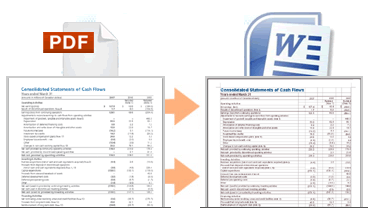The PDF format is convenient in that it accurately conveys the contents and appearance of the document in one file, whether it’s just text or complex combined vector and raster graphics. Among other parameters, the size of the document page is also stored in it. However, this size is not as clear as it might seem at first glance since there are up to 5 different options for describing this size. These description options are called page boxes. The translation of the “page box” into other languages, with the maximum preservation of meaning in the context of prepress, will be something like a page border, a document area, a document border, etc. Explore the best now with Word to PDF conversion.
MediaBox – used to determine the width and height of the page. The media box determines the size of the material, for example, the paper that is being printed, the media box is the largest box of the document, the remaining boxes can be the same or smaller, but in no case can be larger than the media box.
CropBox – the visible area of the page in Acrobat, which contains any information. Crop box is a rectangle of the minimum size in which all visible objects text, pictures, lines, page numbers, footers, etc. of the document would fit. The size of the crop box may be the same or smaller than the media box. Acrobat uses this size to display and print documents. In other words, when you open a file in Acrobat, everything that you see at the moment is displayed in the form of a Crop box.
BleedBox – determines the size of the document along with departures. Departures are the part of the image that is cropped after printing is needed in order to compensate for the error in the cutting process. In the figure, before trimming the bleed box 76×106 mm, and after trimming to the trimmed size 70×100 mm.
TrimBox – determines the size of the product the so-called trimmed size. This is the final size after trimming. TrimBox can also be accompanied by cut marks technical elements of the file.
ArtBox – rarely used, defines the artistic part of the product, an important part of it. Speaking literally the very part where, according to the author’s plan, art, creative, etc. should be heard from the product.
![]()
PDF or portable document format happens to be the universal format for electronic documents, which, incidentally, will soon be 20 years old. It was created at the initiative of Adobe, and its original purpose is an electronic representation of printed materials. From here follows the task of this format, associated with storing information about the color scheme and arrangement of elements, to ensure identical output on different monitors and printers.
During its existence, the PDF format has significantly added to the capabilities. In the very first edition of the format, it became possible to insert hyperlinks into the document text, encrypt the document with a password, and thereby protect it from modification. In version PDF 1.4, it became possible to apply a text layer on top of the image, including the invisible one, giving the user the opportunity, seeing the picture, nevertheless, to copy the text from it.

